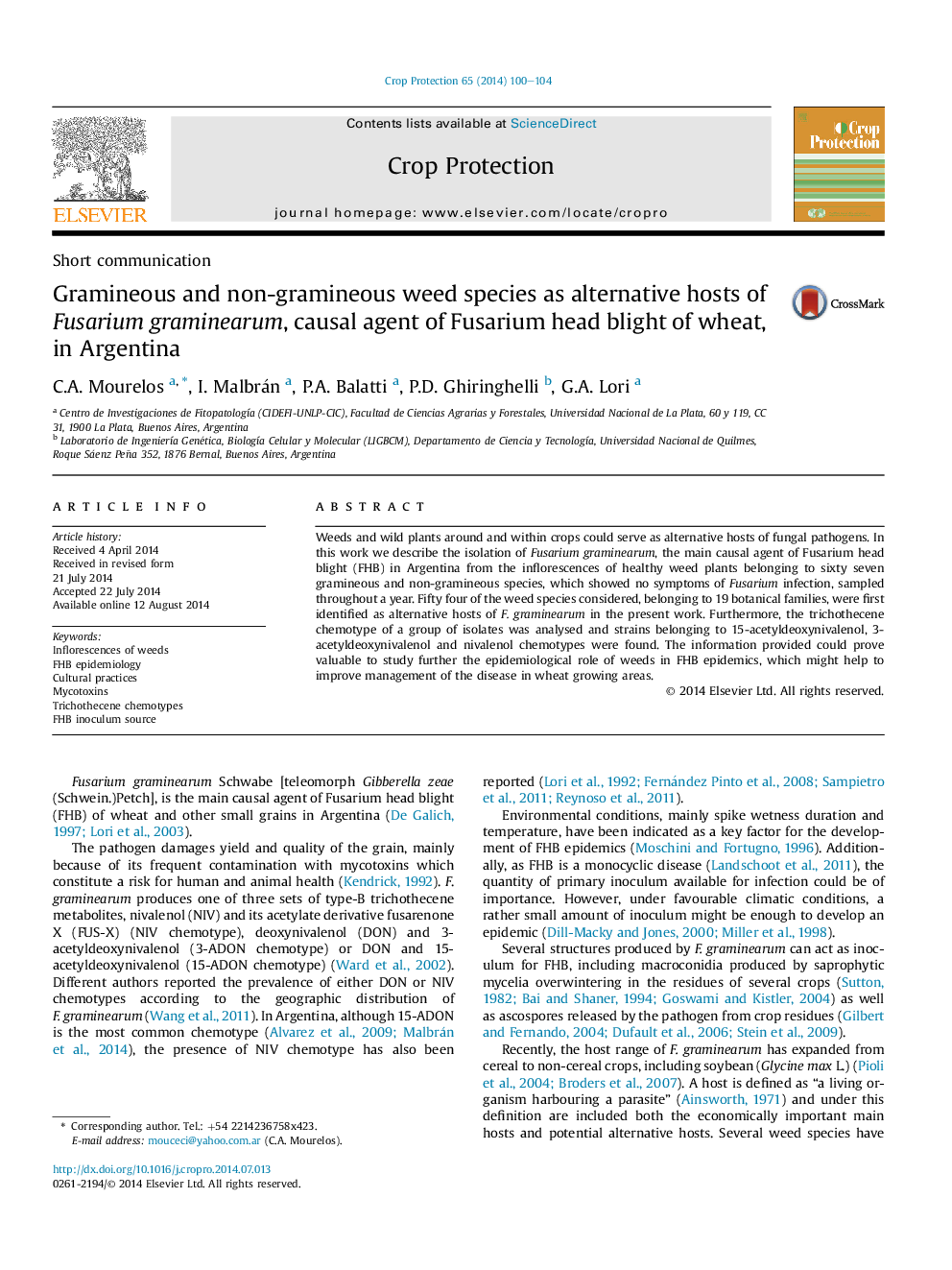| Article ID | Journal | Published Year | Pages | File Type |
|---|---|---|---|---|
| 4505813 | Crop Protection | 2014 | 5 Pages |
•Fixty four weed species were first identified as hosts of Fusarium graminearum.•Non-gramineous weed species as inoculum source of FHB.•15-ADON, 3-ADON and NIV chemotypes of F. graminearum were isolated from weeds.
Weeds and wild plants around and within crops could serve as alternative hosts of fungal pathogens. In this work we describe the isolation of Fusarium graminearum, the main causal agent of Fusarium head blight (FHB) in Argentina from the inflorescences of healthy weed plants belonging to sixty seven gramineous and non-gramineous species, which showed no symptoms of Fusarium infection, sampled throughout a year. Fifty four of the weed species considered, belonging to 19 botanical families, were first identified as alternative hosts of F. graminearum in the present work. Furthermore, the trichothecene chemotype of a group of isolates was analysed and strains belonging to 15-acetyldeoxynivalenol, 3-acetyldeoxynivalenol and nivalenol chemotypes were found. The information provided could prove valuable to study further the epidemiological role of weeds in FHB epidemics, which might help to improve management of the disease in wheat growing areas.
